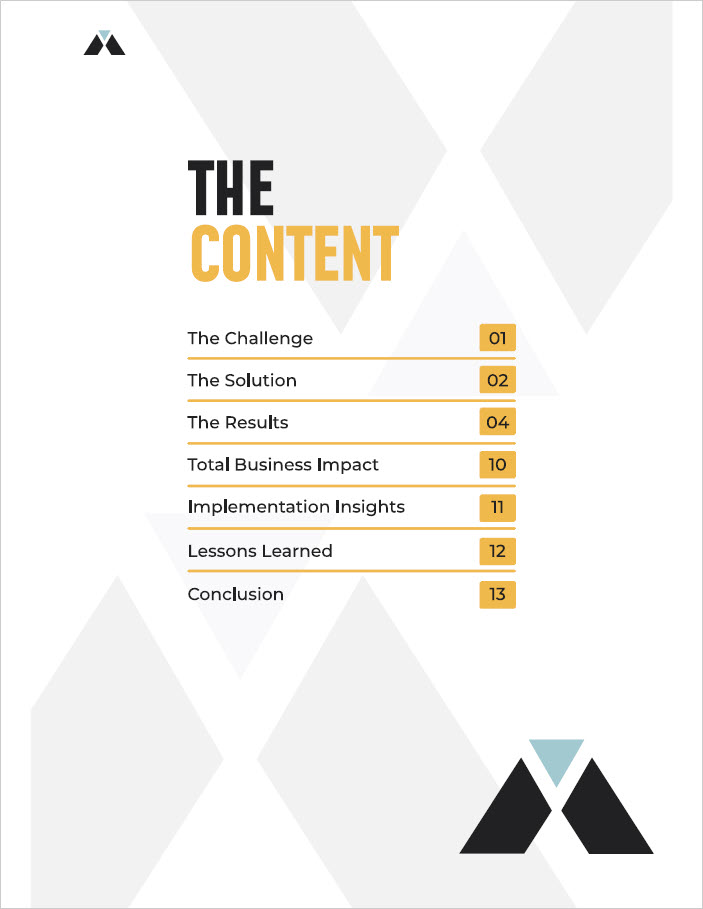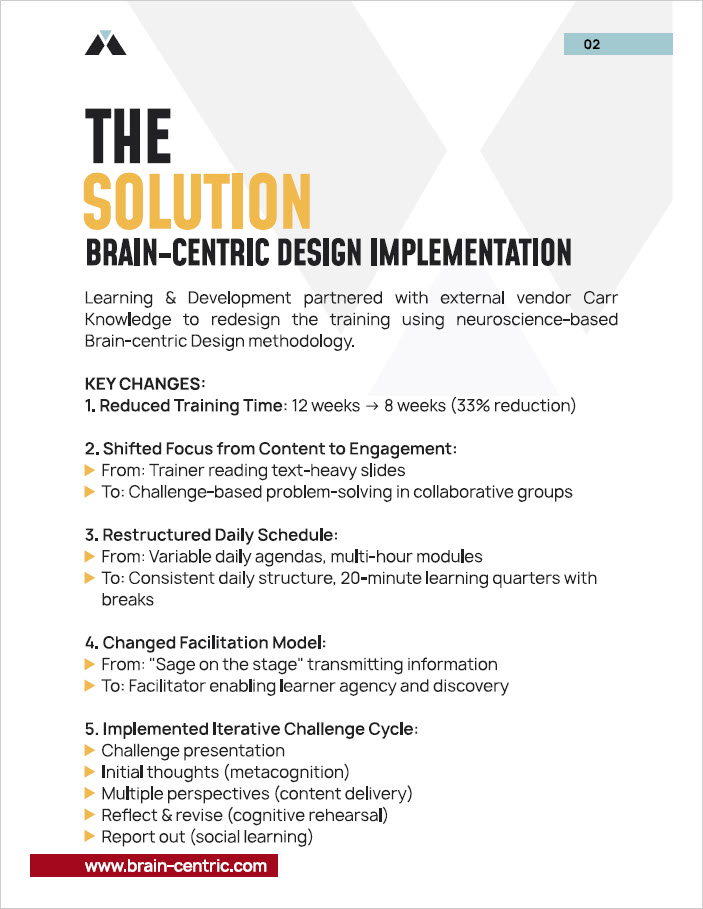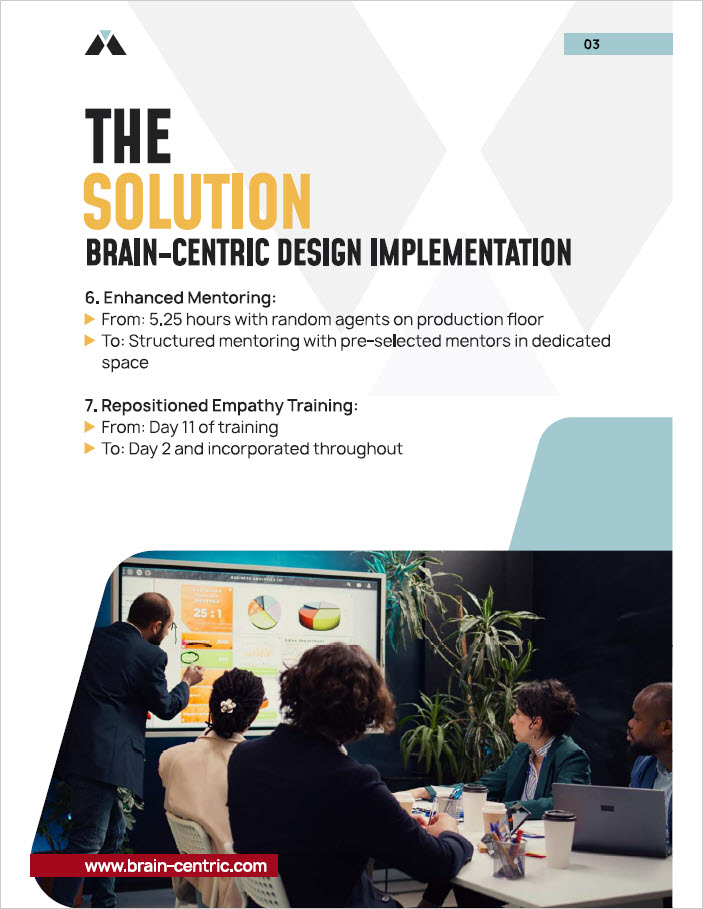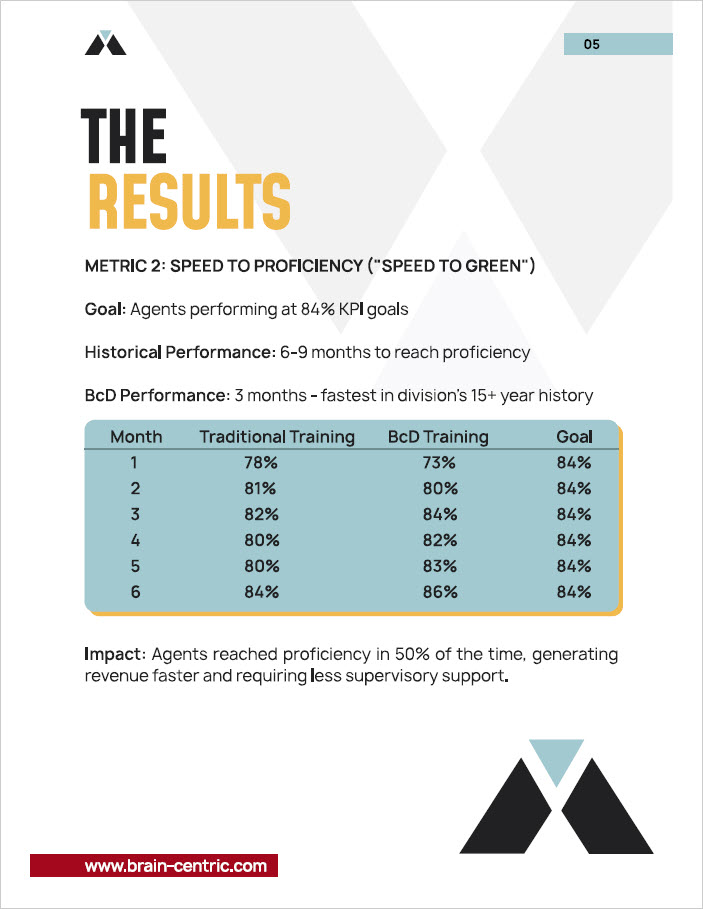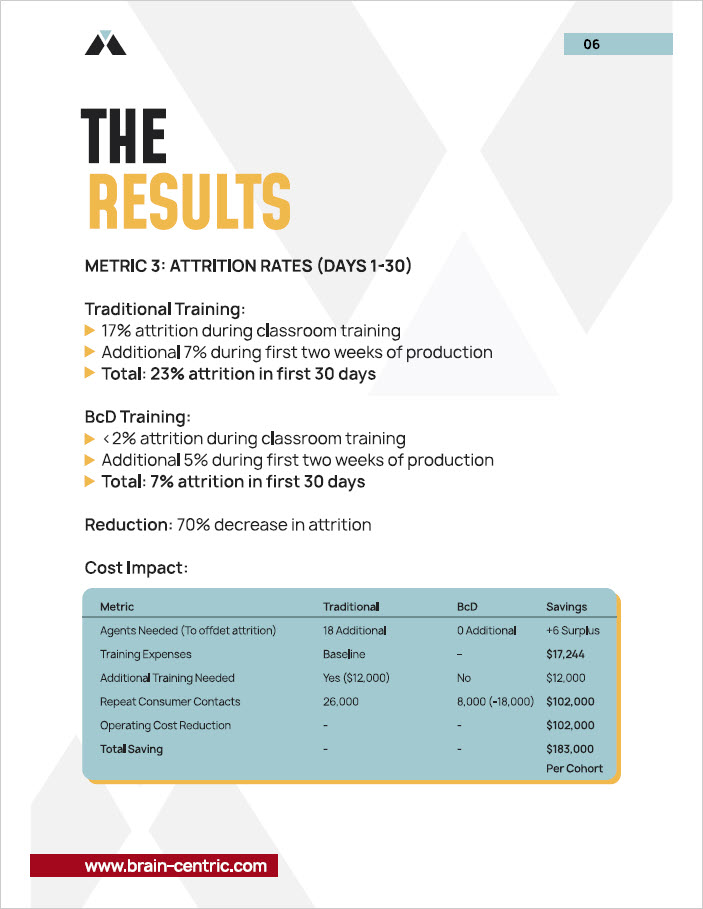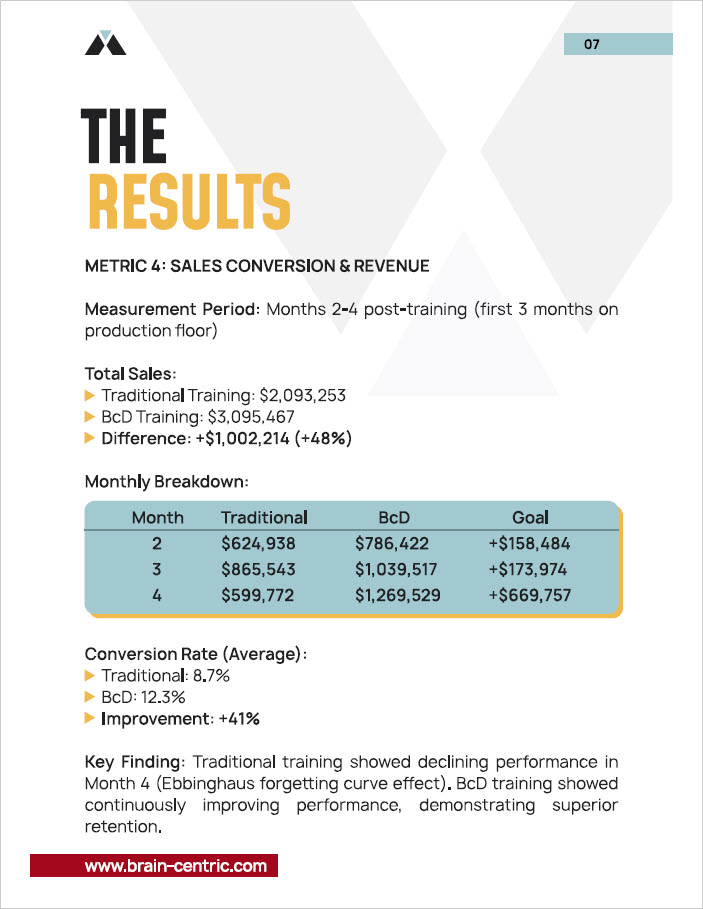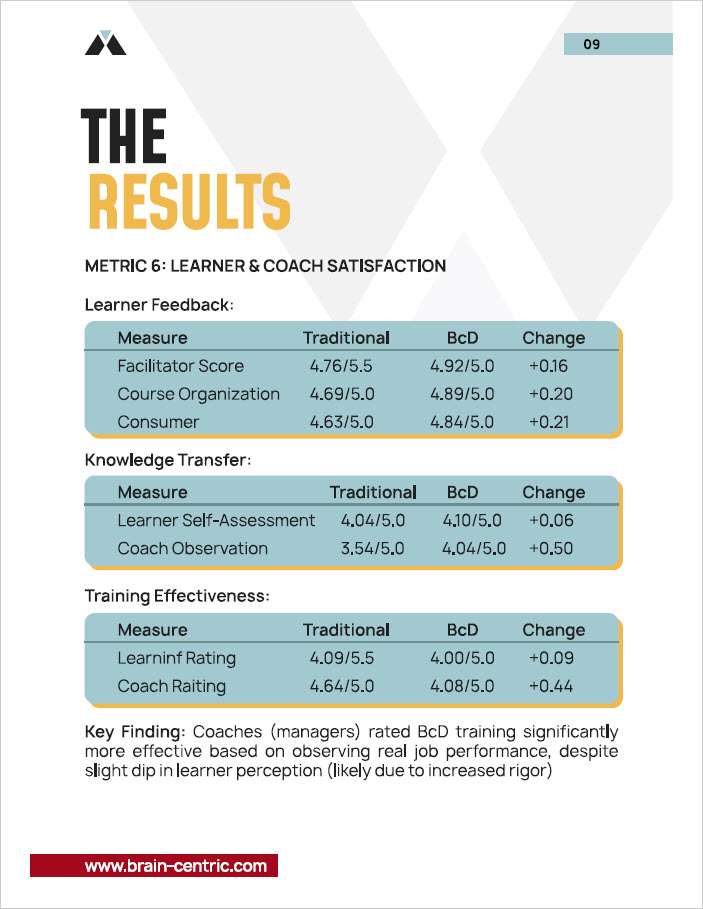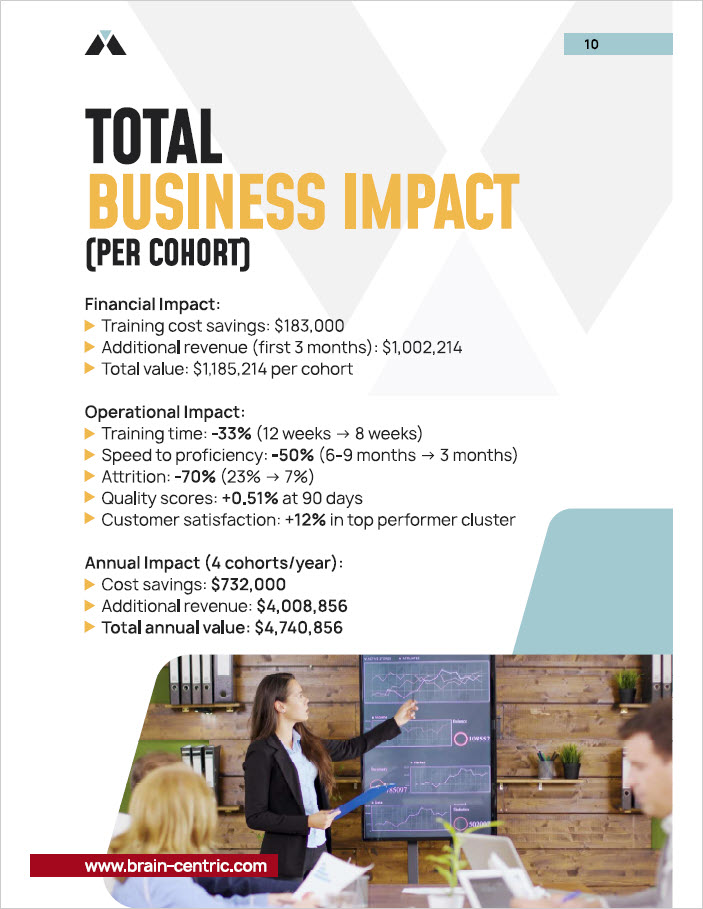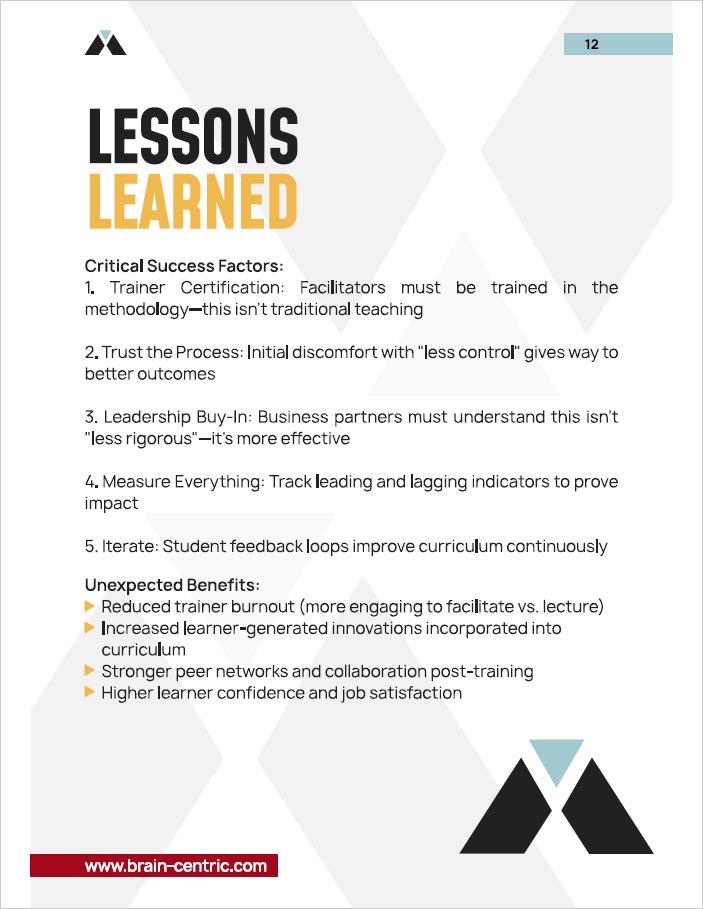FORTUNE 500 CASE STUDY: GLOBAL RETAIL CONTACT CENTER
YOUR CONTACT CENTER iS BLEEDING TALENT...AND REVENUE
33% attrition during training. 50% more attrition within 90 days of going live. 6-9 months to reach proficiency. Constant recruitment. Trainer burnout. Inexperienced workforce handling your customers.
Sound familiar?
This Fortune 500 retail corporation faced the same crisis. Their 12-week training program was too long, too expensive, and wasn't working. High attrition. Slow proficiency. Declining customer satisfaction. Training costs of $2,874 per agent...most of whom quit before becoming productive.
Then they implemented Brain-centric Design.
The Transformation
Training Time
→ Before: 12 weeks
→ After: 8 weeks
Result: 33% faster training
Attrition (First 30 Days)
→ Before: 23% quit
→ After: 7% quit
Result: 70% reduction
Speed to Proficiency
→ Before: 6-9 months
→ After: 3 months
Result: 50-67% faster
Revenue Performance
→ Traditional training: $2,093,253 (months 2-4)
→ BcD training: $3,095,467 (months 2-4)
Result: +48% increase ($1,002,214 more)
Customer Satisfaction
→ Top performers (VOC ≥90%): +12% more agents
→ Poor performers (VOC ≤80%): -8% fewer agents
Result: More agents delivering excellent service
Knowledge Retention
→ 30 days: +0.05% (essentially equal)
→ 60 days: +0.54%
→ 90 days: +0.51%
Result: BcD learners retained MORE over time, traditional declined
The Financial Impact
Per Cohort (24 agents):
→ Training cost savings: $183,000
→ Additional revenue (3 months): $1,002,214
Total value: $1,185,214
Annual Impact (4 cohorts):
→ Cost savings: $732,000
→ Additional revenue: $4,008,856
Total annual value: $4,740,856
What Made It Possible:
→ Reduced training time (12 weeks → 8 weeks)
→ liminated attrition bleeding (23% → 7%)
→ Faster revenue generation (proficiency in 3 months vs. 6-9)
→ Sustained performance (no Ebbinghaus forgetting curve decline)

WHY BRAIN-CENTRIC WORKED WHEN TRADTIONAL TRAINING FAILED
The Old Approach:
→ Heavy lecture-based facilitation with minimal engagement
→ "Sage on the stage" transmitting information
→ Variable daily agendas, multi-hour modules
→ Random mentoring on production floor
→ Empathy training on Day 11 (too late)
The Brain-centric Approach:
→ Challenge-based problem-solving in collaborative groups
→ Facilitator enabling learner agency and discovery
→ Consistent daily structure: 20-minute learning quarters with breaks
→ Structured mentoring with pre-selected mentors in dedicated space
→ Empathy training on Day 2, incorporated throughout
The Result: Trainers reported: "The shift from teaching to facilitating felt vulnerable at first. But once I trusted the model and stepped back to allow learner agency, the impact was immense. Unexpected innovations came from the floor—learners were co-creating the space with me."
Coaches (managers) observed: "I'd never witnessed this kind of high energy learning. Students could retain and articulate difficult concepts quickly and deeply. The brain was apparent in every classroom."
SEE WHAT BRAIN-CENTRIC DESIGN COULD SAVE YOUR ORGANIZATION
TRUSTED BY...


Seattle, Washington
© 2025 Brain-centric, All Rights Reserved
Connect with us on social



